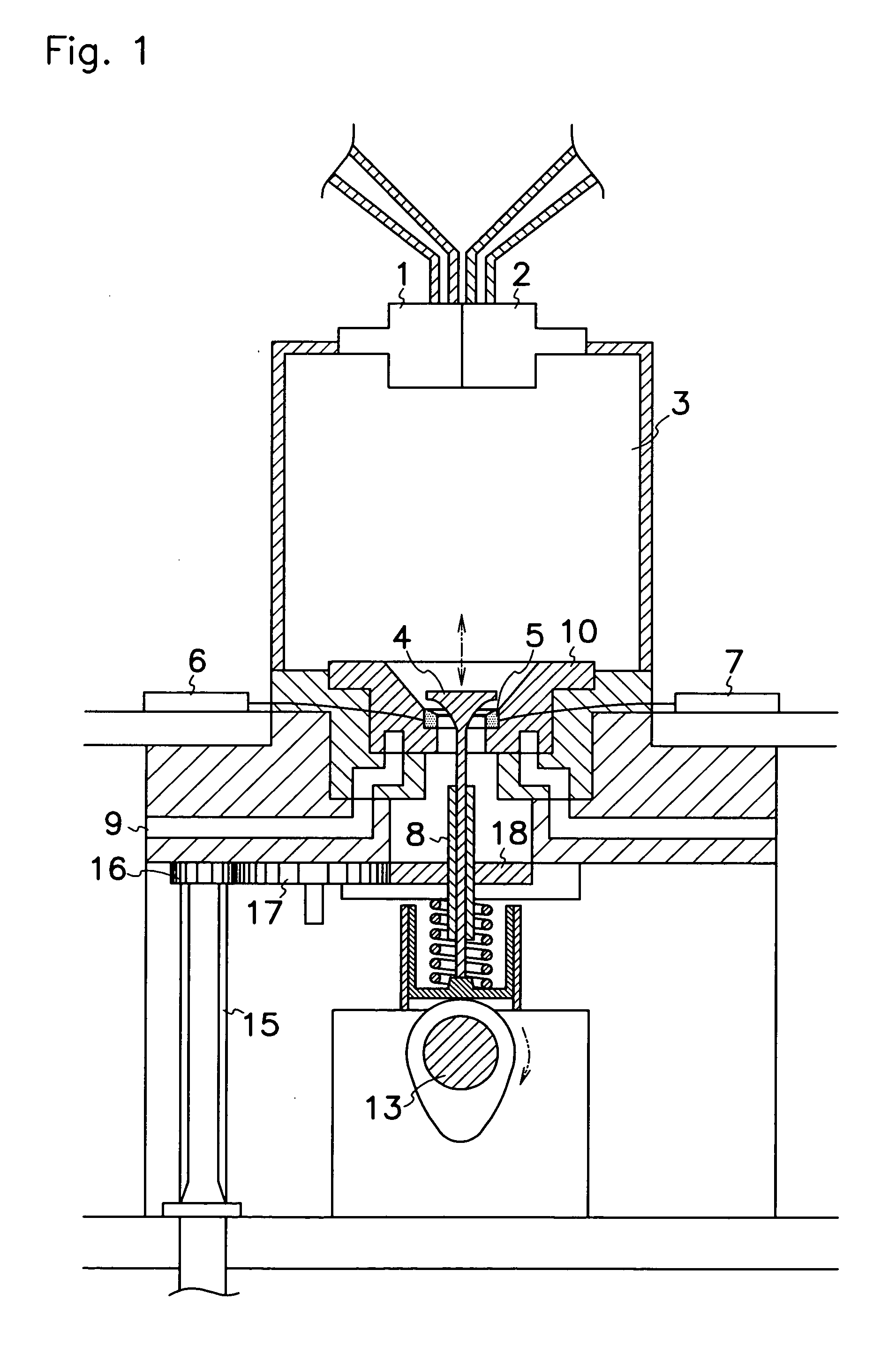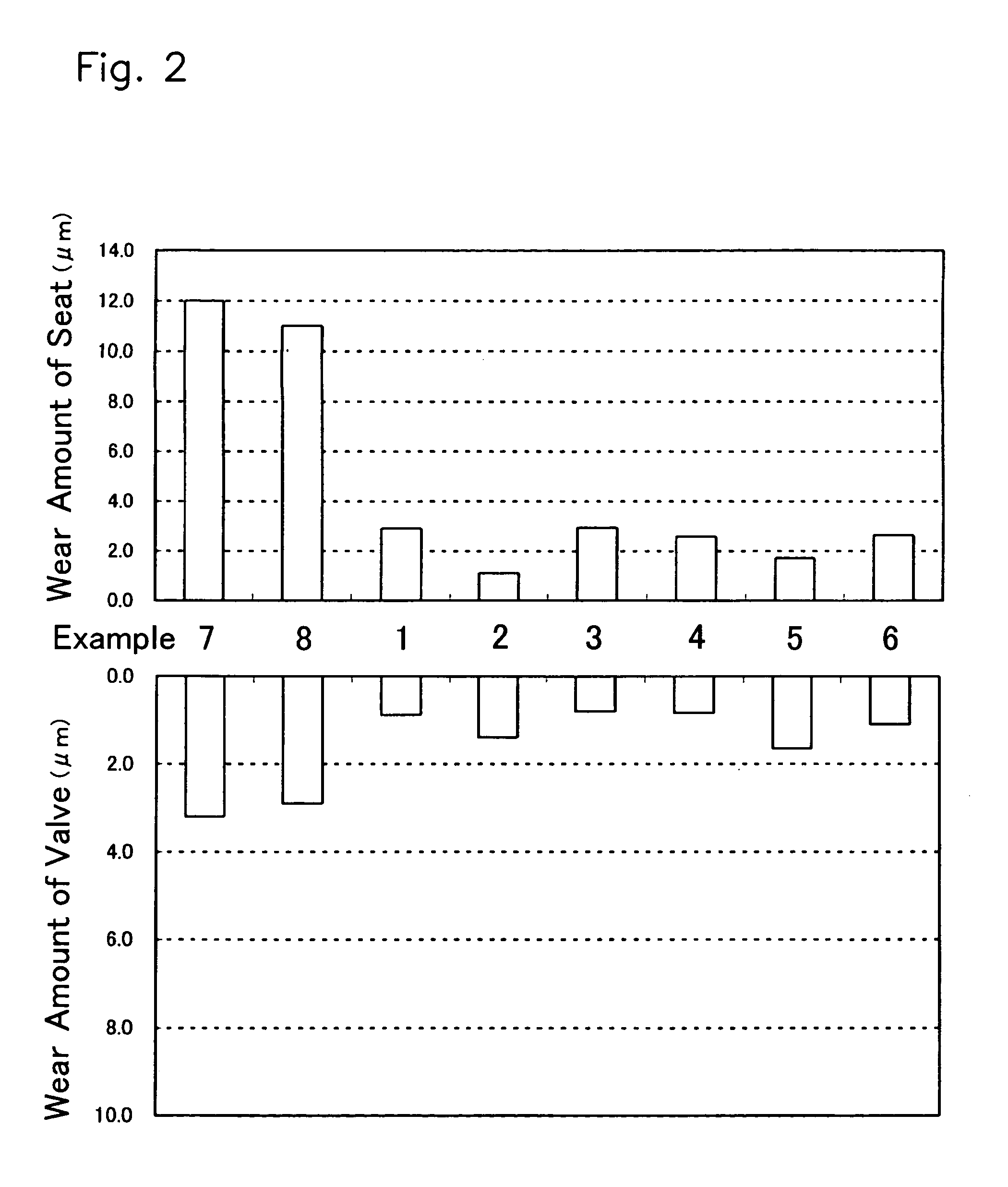Iron-based sintered alloy with dispersed hard particles
a technology of hard particles and iron-based sintered alloys, which is applied in the field of iron-based sintered alloys with dispersed hard particles, can solve the problems of brittle hard particles and unsatisfactory improvement of adhesion properties with the matrix, and achieve the effects of improving heat resistance and wear resistance, improving the adhesion property of hard particles with the matrix, and improving the wettability of hard particles
- Summary
- Abstract
- Description
- Claims
- Application Information
AI Technical Summary
Benefits of technology
Problems solved by technology
Method used
Image
Examples
examples
[0032] The iron-based sintered alloy with dispersed hard particles according to the present invention will next be described with reference to the examples. Examples 1 to 6 are exhaust valve seats of an automobile engine in which the present invention is applied, and Comparative Examples 7 and 8 are exhaust valve seats of the prior art. Table 1 shows the composition of the matrix by weight % and the raw materials of the hard particles and the solid lubricant for Examples 1 to 6 and Comparative Examples 7 and 8. The mark “X” in Table 1 indicates that the reminder of the composition of the matrix is substantially iron (Fe) except for unavoidable impurities.
TABLE 1Exam-Matrix Composition (wt %)HardSolidpleFeSiCrMoVNiNbCParticleLubricant1X115370.50.8FeMoBCaF22X115370.51FeMoBCaF23X0.40.530.630.50.8FeMoBCaF24X0.415370.50.8FeMoBCaF25X1153732FeMoBCaF26X1.435370.50.8FeMoBCaF27X11537—0.8FeMoCaF28X0.813340.50.8FeMoCaF2
[0033] In Examples 1 to 6, an iron powder serving as a pre-alloy powder ha...
PUM
| Property | Measurement | Unit |
|---|---|---|
| temperature | aaaaa | aaaaa |
| grain size | aaaaa | aaaaa |
| density | aaaaa | aaaaa |
Abstract
Description
Claims
Application Information
 Login to View More
Login to View More - R&D
- Intellectual Property
- Life Sciences
- Materials
- Tech Scout
- Unparalleled Data Quality
- Higher Quality Content
- 60% Fewer Hallucinations
Browse by: Latest US Patents, China's latest patents, Technical Efficacy Thesaurus, Application Domain, Technology Topic, Popular Technical Reports.
© 2025 PatSnap. All rights reserved.Legal|Privacy policy|Modern Slavery Act Transparency Statement|Sitemap|About US| Contact US: help@patsnap.com



